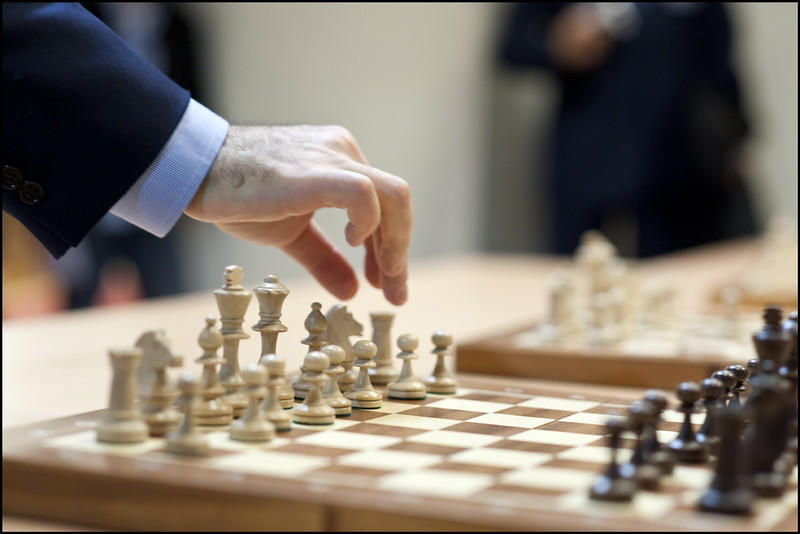If you have heard of the Scotch Game chess opening, but have no idea what it is, it has nothing to do with whiskey, scotch eggs or scotch tape. Absolutely nothing at all.
One thing it does is uphold the definition of “scotch” which means to do something decisively and quickly or even prevent it from getting started.
The origin of the name comes from an 1824 correspondence chess game between an Edinburgh and London player. Having said that, the opening actually predates that by about a century! It was recorded in a document written by Ercole del Rion in 1750. Even though he is one of three Modenese Masters, he is in fact better remembered as an author and lawyer than as a chess player.
In this article, you will find out about how to play Scotch opening chess and why a Scotch chess opening strategy is considered one of the top chess openings today.

Analysing Scotch Chess
Scotch opening chess, looks at first, like any Open Game and is noted as:
- e4 e5 2. Nf3 Nc6
Those are the same moves that define the Ruy Lopez chess opening as well as a host of other gambits like the Elephant Gambit, Vienna Game and Danvers. All of these are characterised by the move that White makes next. In Scotch chess, it is 3. d4.

Playing Scotch opening chess, like other strategies, is all about centre domination. Black’s response, to capture White’s d4 pawn while theirs is on e5 is the best it can do. What happens next is that White, who has several options makes a 4. Bc4 move which initiates a Scotch chess opening strategy or Scotch Gambit.
In some ways, Scotch chess follows classic openings which allow for lots of development and is a traditional game. Unfortunately, Scotch opening chess can be challenging for beginners because there are lots of options to consider
As a beginner, it may be difficult to calculate your full advantage if you don’t have the experience of knowing what lies ahead. The same can be said of the Queen’s Gambit which has been made popular by the Netflix series. In real life that gambit is a bit more complex than its portrayed in the film.
Here are some of the variations players can consider regardless of which side of the board they are on.
Most Oft-Played Scotch Chess Variations
Before we explore moves by either player, we have:
- e4 e5 2. Nf3 Nc6 3. d4 exd4 4. Nxd4
When White recaptures its lost pawn, Black is able to respond in a few ways. Firstly, in a classical variation, the Black’s kingside bishop moves to c5 and in the Schmidt variation, it sees the kingside knight take residence on f6. On the other hand, the questionable Steinitz variation is also available.
For some, developing the queen early in a game is thought to be too risky and not something that a novice, with limited experience should attempt. For more advanced players, the early advancement of the queen is considered enterprising and an entrée to some wild, exciting play. For Black, Qh4 means that White will sacrifice its pawn so that it can develop its pieces and have more opportunities for attack. That seems like a lot of advantage for Black to throw away, doesn’t it? In the same way, Black will use its queenside knight to take White’s d4 knight and raise a few eyebrows because it limits the development of pieces that could potentially be brought into play. Finally, the most questionable move is when Black plays its kingside bishop. Bb4 is considered by some as a clever ploy where Black moves into the lead. However, others would say that it takes away from the point of the game which should be focused on the board’s centre. Like the King’s Gambit, White isn’t limited by the Nxd4 response. Let’s consider how else Scotch opening chess could possibly play out.

Possible Gambits in Scotch Chess
How do gambits differ from responses in chess? So far, we have looked at possible variations for White’s response to Black capturing its d4 pawn. Some are sound, while others are dubious, however, all potentially provoke responses from Black that could take the game in an entirely different direction.
We’ll look at some notable games further down, but gambits are a series of planned moves that sacrifice a minor piece (often a pawn) in favour of an overall advantage. After a d4 pawn capture, White can offer two possible gambits.
The Göring Gambit Noted as 4. c3
Here, White makes gains in piece development because of the possible sacrifice of its two pawns and then follows through by placing Black's f7 pawn directly in the hot seat. In this, the Göring gambit, every single piece will align with the 2-g diagonal line. White may advance its queen to b3 and its kingside bishop to c4 which puts additional pressure on Black’s f7 pawn by advancing its kingside knight to f5.
On the other hand, White can opt to move its queenside knight to c3 when Black has a pawn on d5. This gambit, which also resembles the Danish Gambit, has enjoyed some popularity among high-ranking players like Jonathan Penrose and Alex Alekhine, however, it is not generally well-received if played in tournaments at master level. In chess clubs, it does see a lot of play and you might even know someone who likes to routinely use this gambit. The French Defence on the other hand will provide Black with a more certain advantage.
The Scotch Gambit
The second way that White can offer a gambit is through 4. Bc4 which gives Black two possible options. Firstly, it could let the Scotch play out by moving its kingside bishop to C5 which would initiate White’s response to move its c-file pawn one square. Black could then develop its queenside knight Nc6 and the notation for this looks like 4. Bc4 Bc5 5. c3 Nc6
Alternatively, Black could choose to arrive at the same result which invokes the Two Knight Defence. A poorly-named defence, it calls for Black to develop its kingside knight by moving it to square f6. This means that both knights, on the sixth rank will be ready to defend, but also ready to attack. This is the reason why the name is misleading. When Black accepts this gambit, it captures White’s c3 pawn. However, doing so means that it plays right into White’s strategy and gives it a much greater advantage. Incidentally, the origins of the Two Knight Defence lie in the Italian Game which is considered an aggressive strategy by Black.

Notable Matches Featuring a Scotch Chess Opening
For some, watching chess is as dull as watching paint dry, but for the enthusiast, it can elicit great roars of approval or dismay. If only the chess players did not need to focus so intensely, they could appreciate the involvement of their fans. Chess can certainly elicit great excitement and not just for high-ranking players that draw crowds, but also for acceptance and declines of gambits offered which can result in astonishing play, or great blunders.
Here are a few high-profile games that feature the Scotch chess opening strategy.
- Kasparov-Nakamura which took place in St Louis, Missouri in 2016 is remembered for Nakamura’s alternative move to castling early in the game.
- Campora-Olafsson, Campora which took place in Spain during the 2004 chess Olympiad is remembered for the Black king which got into trouble because it lost its castling opportunity.
- Kasparov-Karpov which took place in Lyon, France in 1990 is remembered for its Scotch game chess opening at a World Chess Championship match.
It’s not surprising that the Kasparov-Karpov match would create a stir, after all this time. Firstly, the two rivals hated each other so much they couldn’t even respect each other’s chess skills even though they were from the same country.
In fact, at one point of friction between the two, Karpov played under the Soviet flag but Kasparov preferred to be represented by the Russian flag. As a result of this flag war, these grandmasters even played for the 1990 World Championship title without any flags in sight on their table. As you can see, chess is full of personalities, drama and excitement. The point here is that Garry Kasparov did much to bring Scotch opening chess back to the fore much like Bobby Fischer did for the renowned Sicilian Defence.















